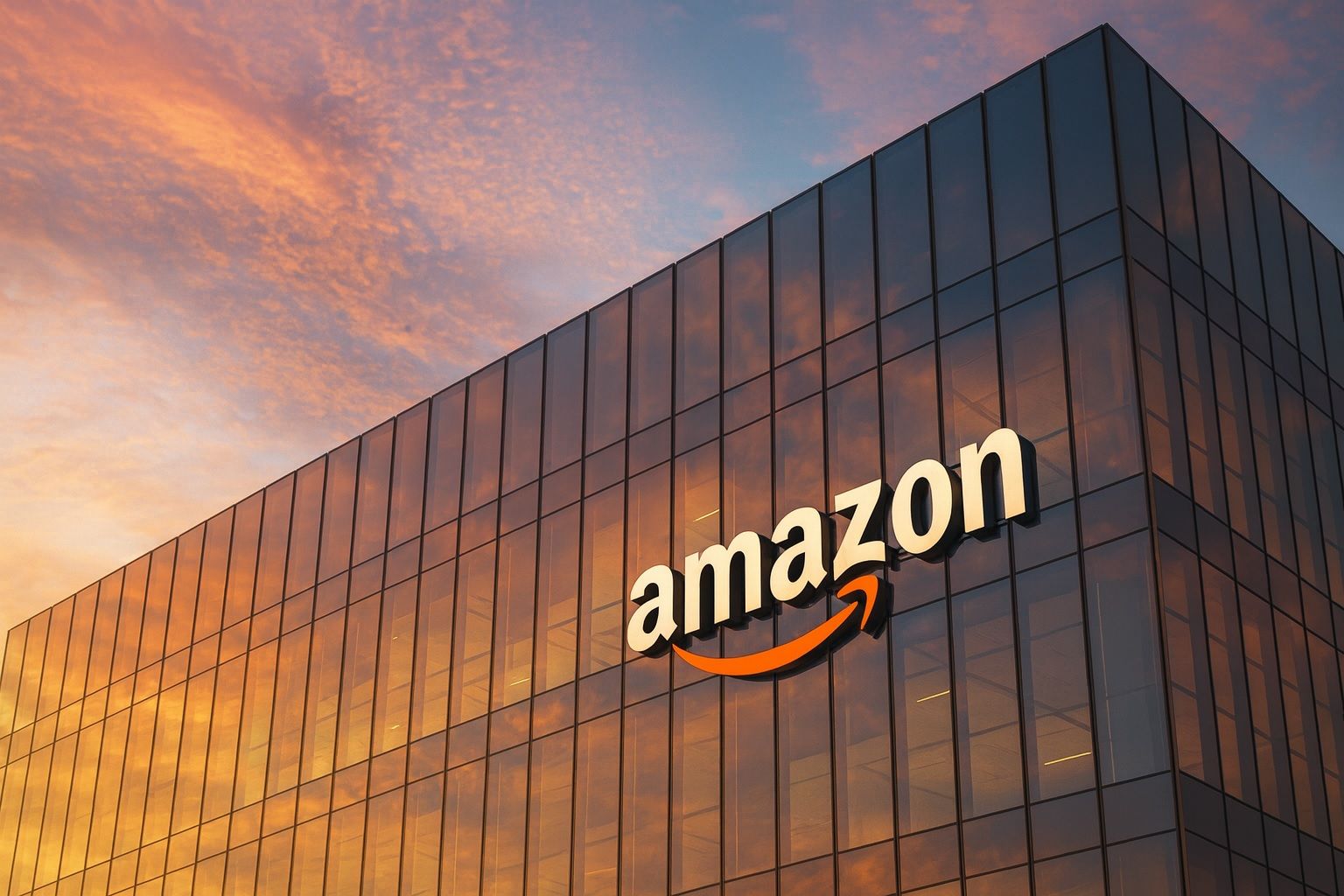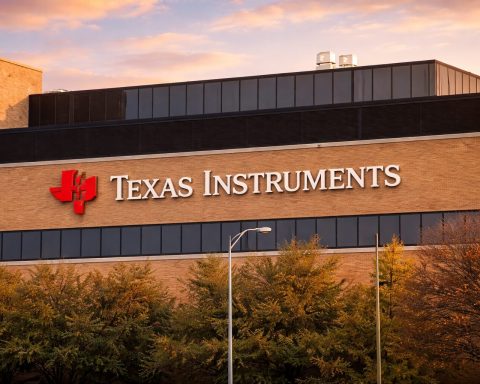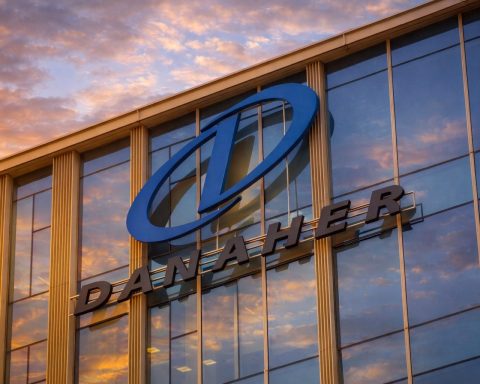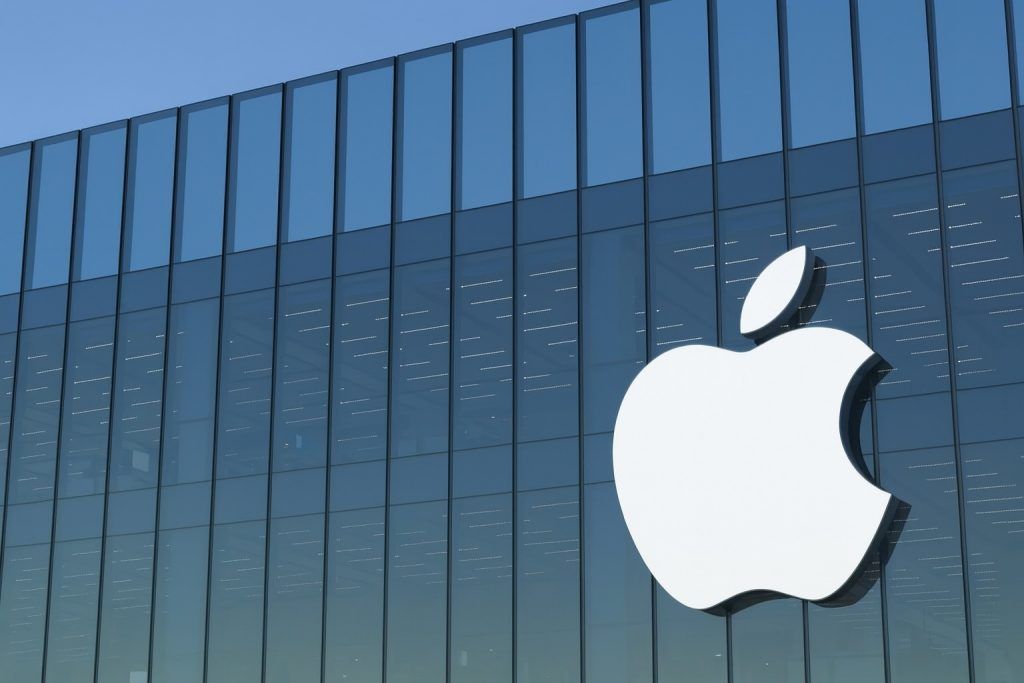- Stock Rebound: Amazon’s stock (NASDAQ: AMZN) rallied into late October, trading around the mid-$220s per share after a volatile month [1]. Shares remain roughly flat year-to-date (vastly underperforming the Nasdaq’s ~15% gain) [2], but analysts see ~20% upside with an average 12-month target in the mid-$260s [3]. Nearly all 45+ Wall Street analysts covering Amazon rate it a “Buy” [4].
- Earnings Momentum: Amazon is set to report Q3 2025 earnings on October 30, with Wall Street expecting around $177–178 billion in revenue (~10–13% YoY growth) and about $1.5–1.6 EPS [5]. Amazon’s own guidance for Q3 was $174–179.5B in sales (10–13% growth) [6], following a strong Q2 where net sales rose 13% (to $167.7B) and net income jumped to $18.2B [7]. High-margin segments like cloud and advertising have been major growth drivers (Q2 AWS revenue +17% YoY; ads +22%) [8].
- AWS Outage & Resilience: A massive AWS cloud outage on Oct. 20 knocked thousands of websites and apps (Snapchat, Roblox, banks, etc.) offline for hours [9] [10]. Amazon engineers resolved the issues by that evening, restoring all services [11]. In a surprise twist, investors shrugged it off – Amazon’s stock rose ~1.6% that day [12], reinforcing confidence in AWS’s reliability. One market expert quipped that while “the spotlight was firmly on AWS” during the glitch, it “didn’t quite shine” as expected [13] – yet the quick recovery soothed market nerves.
- $2.5 B FTC Settlement: In late September, Amazon agreed to pay $2.5 billion to settle a Federal Trade Commission case over allegedly deceptive Prime subscription sign-ups and cancellations [14]. The deal includes $1.5B in refunds to customers [15]. Amazon admitted no wrongdoing, and analysts called the resolution a “major overhang” removed from the stock [16]. Shares were largely unchanged on the news [17], as the fine is manageable for a company of Amazon’s scale. Amazon still faces an ongoing FTC antitrust lawsuit (filed 2023) aiming to curb its market dominance [18], but the Prime case settlement marked a significant regulatory win for the company.
- AI & Product Blitz: Amazon doubled down on artificial intelligence and new gadgets. At a Sept. 30 hardware event, it unveiled Alexa+, a new generative AI voice assistant, integrated into four new Echo devices and offered free for Prime members [19] [20]. It also introduced the first Kindle Scribe e-reader with a color display and upgraded Ring and Blink smart cameras with AI features [21] [22]. Amazon is investing heavily in AI infrastructure – even taking a $4 billion stake in Anthropic (an AI startup) to bolster AWS’s AI cloud services [23]. New partnerships reflect this AI push: on Oct. 1, AWS announced a multi-year deal with the NBA to power “NBA Inside the Game,” an AI-driven stats and insights platform for basketball fans [24] [25]. And in advertising, Amazon struck a collaboration with Microsoft where Amazon’s ad tech will become the preferred DSP for Microsoft’s clients, leveraging Amazon’s shopper data and AI to enhance ad targeting [26] [27].
- Retail & Sales Boost: The company staged a “Prime Big Deal Days” sale event on Oct. 7–8 (a second Prime Day), offering steep discounts to jump-start holiday shopping. Early reports indicate the event drew strong demand and will modestly lift Q4 revenue [28] [29]. Amazon’s core e-commerce business continues to grow at a healthy clip – online store sales were up ~11% YoY last quarter [30] – aided by faster deliveries (Amazon is on track for record same-day/next-day deliveries in 2025 [31]) and its expanding Prime membership perks. To handle the holiday rush, Amazon announced it is hiring 250,000 U.S. seasonal workers, matching last year’s level [32]. These temporary fulfillment and delivery roles, averaging $19+ per hour, will bolster Amazon’s logistics throughput in the crucial fourth-quarter shopping season [33] [34].
- Workforce Moves – Robots & Layoffs: Even as it hires for peak season, Amazon is streamlining elsewhere. Internal documents leaked in October suggest Amazon plans to automate up to 75% of its operations in coming years, potentially replacing 600,000 jobs with robots by 2027 as part of a $12.6B efficiency drive [35] [36]. Amazon said the leaked plans are “misleading” and not an official roadmap [37], but CEO Andy Jassy has openly signaled that AI will allow the company to operate with fewer people. In a June staff memo, Jassy predicted, “as we roll out more Generative AI…, we will need fewer people doing some of the jobs… In the next few years, we expect that this will reduce our total corporate workforce” [38] [39]. Consistent with that, reports say Amazon is preparing to cut ~15% of its HR division (the People Experience & Tech team) and possibly other groups, as AI tools take over more administrative tasks [40] [41]. These layoffs – likely impacting over 1,500 HR staff – have not been formally announced by Amazon, but multiple sources (e.g. Fortune, Yahoo Finance) leaked the plans in mid-October. Notably, Amazon already shed some AWS roles earlier in 2025 amid an ongoing cost trim at tech giants [42] [43]. On the flip side, Amazon just invested $1 billion to raise wages and benefits for its frontline logistics workers, lifting average pay to $30+ per hour [44] [45]. The company is walking a tightrope between aggressive automation and keeping its massive workforce content.
Financial Performance & Earnings Highlights
Amazon entered Q4 on solid financial footing. In the last reported quarter (Q2 2025), the company beat expectations with $167.7 billion in revenue (+13% YoY) and $18.2 billion in net profit [46]. Operating income more than doubled year-on-year, reflecting cost cuts and efficiency gains. Two high-margin engines stood out: Amazon Web Services (AWS) posted ~$30.8B in sales (up ~17% YoY) [47], and Amazon’s advertising unit (“Other” revenue) grew ~22% as it closes in on a $40B annual ad business [48]. These segments carry ~30–35% operating margins, far higher than the core retail division [49], and are driving Amazon’s profit surge.
For Q3 2025 (results due Oct. 30), analysts expect Amazon to continue its growth streak, albeit at a slightly moderating pace as post-pandemic expansion normalizes. Consensus forecasts peg Q3 revenue around $177–178 billion (approximately 10–13% higher than Q3 2024) and earnings per share near $1.57 [50]. Amazon’s own guidance was $174–179.5B for Q3 sales [51], indicating confidence in a double-digit holiday-quarter ramp. If those targets are met, it would mark Amazon’s third straight quarter of ~10%+ revenue growth in 2025 – a clear acceleration from 2022–2023 when growth dipped into single digits.
Key factors for Q3: Investors will be laser-focused on AWS results and cloud margins. After a few quarters of slower cloud growth industry-wide, Wall Street is looking for AWS to re-accelerate toward ~20% YoY growth (up from ~12–15% in mid-2024) [52]. Benchmark analyst Daniel Kurnos notes that AWS has a “high bar” but he’s “confident” it can jump it, expecting ~20% growth and calling AWS the potential catalyst to “give AMZN stock a boost” if results beat forecasts [53]. Strong AWS numbers would validate Amazon’s massive cloud/AI investments. Meanwhile, the advertising division is another swing factor – it has quietly become the world’s #3 digital ad platform (after Google and Meta) [54], and continued 20%+ growth there provides a nice earnings buffer regardless of retail volatility. Amazon’s operating margin will also be scrutinized: in Q2 it hit 9.7% (versus 6.3% a year prior) [55], and further margin expansion in Q3 (via cost discipline and automation) could impress the Street. Finally, management’s outlook for Q4 holiday sales will be critical. Any upbeat signals on consumer demand or cloud contracts could send estimates higher, whereas cautious guidance might temper investor enthusiasm.
Early signs point to a robust holiday season kickoff – the October Prime event and ongoing high inflation (which often pushes shoppers to seek Amazon deals) likely boosted volume. As we head into the results, Amazon’s CFO and CEO will likely highlight how the company’s “flywheel” of businesses (Prime, marketplace sellers, AWS, ads, devices, etc.) is delivering resilient growth despite economic headwinds [56]. With consensus anticipating full-year 2025 EPS around $7.60 (up ~160% from 2023’s $2.90) [57], Amazon appears back in high-growth mode financially.
Stock Performance in October 2025
October was a roller-coaster month for Amazon’s stock – but one that ended on a high note. AMZN shares began the month in a slump, around ~$210 after sliding nearly 5% in early October amid a broad tech sell-off [58] [59]. Concerns about rising interest rates and U.S.–China trade tensions hit the whole Nasdaq, and Amazon, being 2025’s laggard among mega-cap tech, took a harder hit. In fact, on October 10 alone the stock plunged ~4–5% (its worst day since August) on reports of new U.S. tech export curbs to China that spooked markets [60]. This drop highlighted Amazon’s relative underperformance in 2025 – by mid-October, shares were roughly flat for the year (~+3%), while peers like Apple, Microsoft, and Google had notched solid double-digit gains [61]. Amazon has essentially been moving sideways in 2025, stuck ~7–10% below its all-time high of $242 (from Feb 2025) [62].
However, mid-October brought a rebound. After bottoming in the low $210s, AMZN bounced back to ~$216–218 by Oct. 14 [63] [64], and then kept climbing. A confluence of positive news propelled the stock higher: the Prime Big Deal Days sales appeared solid, a big FTC overhang was lifted, and hype began building for Amazon’s earnings. Notably, when AWS suffered its outage on Oct. 20, many feared a sell-off – yet the opposite happened. The stock jumped 1.6% on Oct. 20 [65] as investors saw the quick fix as proof of AWS’s strength (and possibly because the incident underscored how indispensable AWS is to the internet). By Oct. 24, Amazon closed around $224.35 [66] – up ~6% from the start of the month. Trading volumes were moderate, but there was clear accumulation on news-driven days, suggesting institutional buyers stepped in on dips [67].
Overall, Amazon’s share price trajectory in October reflected a shift in sentiment. Earlier in the year, many investors rotated toward AI darlings like Nvidia or chased bigger gains in other “Magnificent Seven” stocks, leaving Amazon in the dust. But as October ended, some of that capital flowed back into Amazon, viewing it as a value play among megacaps. The stock’s forward P/E near ~33 (on 2025 earnings) remains above the market average [68], yet some analysts argue Amazon’s valuation looks reasonable given its growth profile – especially if cloud and AI initiatives drive an acceleration. Indeed, a few have even called Amazon “discounted” after its underperformance [69]. Technical analysts also cheered that AMZN held support around $210 during the autumn dip and now is approaching key resistance around $242; a breakout past $242 (this year’s high) could “propel shares toward $270+” according to chart watchers [70]. In short, Amazon’s stock in October regained momentum, setting the stage for what bulls hope will be a strong year-end rally pending the Q3 earnings outcome.
Comparative context: Amazon’s ~$2.3 trillion market cap at month’s end firmly positions it as the world’s third-most valuable public company (behind Apple and Microsoft). Some market commentators have speculated that if Amazon executes well in cloud and AI, it could join the exclusive “$3 trillion club” in the next couple of years [71] [72]. That would require roughly a one-third increase in share price – not trivial, but far from impossible if earnings compound at 15–20% annually (the current analyst consensus for the next 5 years [73]). Of course, risks like a consumer slowdown or regulatory crackdown could spoil the party. But as of late October, investor optimism around Amazon was the highest it’s been all year.
Cloud, AI, and Tech Initiatives
Amazon spent much of October showcasing its technological firepower, especially in AI and cloud computing. A centerpiece was its fall Devices & Services event on Sept. 30, 2025, where Amazon made a splashy introduction of “Alexa+” – a new AI assistant described as a more conversational, personalized evolution of Alexa. Alexa+ is powered by advanced large language models and offered free to Prime members (or $19.99/month to non-members) [74]. In practical terms, Alexa+ can handle complex requests (scheduling, home automation, shopping tasks) with more natural dialogue. To support Alexa+, Amazon launched four new Echo devices (Echo Dot Max, Echo Studio, Echo Show 8 & 11) purpose-built for AI, sporting custom AZ3 AI chips and enhanced sensors for context awareness [75]. These represent Amazon’s most advanced Echo lineup yet, effectively turning its popular smart speakers/displays into on-premise AI agents. Wired noted that Alexa+ essentially injects a “next-gen Alexa chatbot” into Amazon’s hardware ecosystem [76], keeping it competitive with Google Assistant and Apple’s Siri in the race to build AI-powered digital butlers.
In addition to Alexa+, Amazon’s hardware blitz included a new Kindle Scribe e-reader with a color screen (a first for Kindle) aimed at productivity and note-taking [77] [78], updated Fire TV devices with Alexa+ integration, and upgraded home security cameras (Ring and Blink brands) featuring 4K video and even an AI tool to find your pets on camera footage [79] [80]. The message was clear: Amazon is weaving AI into every facet of its consumer products, from reading and streaming to home security.
On the AWS cloud side, October saw Amazon emphasizing partnerships and investments to strengthen its AI capabilities. Most notably, Amazon invested $4 billion in Anthropic, an AI startup building large language models (and a rival to OpenAI) [81]. Announced in late September, the deal gives AWS minority ownership and, more importantly, exclusive cloud provider status for Anthropic – meaning Anthropic’s cutting-edge AI models will run on AWS infrastructure. This was widely seen as a strategic move to bolster AWS’s AI offerings against Microsoft (which backs OpenAI on Azure) and Google Cloud (which has its own DeepMind models). Additionally, Amazon is pouring resources into bespoke AI chips (like its Trainium and Inferentia silicon) and recently revealed it’s spending $100 billion in 2025 capex largely to expand data centers for AI and cloud growth [82] [83]. AWS’s capital spending is enormous – over $30B per quarter on tech infrastructure per TS2’s analysis [84] – underscoring Amazon’s determination to remain the premier platform for AI development.
In terms of partnerships, one headline-grabber was AWS’s alliance with the NBA. On October 1, Amazon announced a multi-year cloud partnership with the NBA to create “NBA Inside the Game” – an AI-powered platform offering real-time game stats, analytics, and enhanced fan experiences [85] [86]. Using AWS machine learning, the NBA will generate new advanced statistics (like defensive positioning metrics, shot success probabilities, etc.) for live broadcasts and the NBA app [87]. This showcases AWS’s push into sports analytics and consumer-facing AI features, areas where rivals like Google and Microsoft are also active (Microsoft inked a similar AI deal with the English Premier League recently [88]).
Another notable tie-up was in the advertising domain: Microsoft Advertising chose Amazon as a preferred partner to transition its clients after Microsoft decided to sunset its own DSP (demand-side platform) called “Invest.” In a blog post, Microsoft said Amazon’s DSP will become the “preferred platform” for its ad customers, citing Amazon’s “exceptional results” using real shopping data and AI-driven ad tech [89] [90]. Moreover, Microsoft’s Monetize publisher network will join Amazon’s Certified Supply Exchange, giving Amazon’s advertisers direct access to Microsoft’s ad inventory (like on Xbox, MSN, etc.) [91]. This Amazon–Microsoft ad collaboration (announced Oct. 7) is remarkable: two rivals in cloud and voice assistants teaming up in advertising, an area where Amazon is now a power player. It signals that Amazon’s ad infrastructure – fueled by its retail data trove – is compelling enough that even competitors will partner rather than try to beat it.
Finally, Amazon continued fostering AI talent and research. In mid-October, Amazon and Carnegie Mellon University launched a Strategic AI Innovation Hub in Pittsburgh [92]. Amazon will fund research projects, PhD fellowships, and workshops at CMU focusing on generative AI, robotics, NLP, and cloud computing [93] [94]. The partnership, featuring Amazon’s VP of “Agentic AI” (a new term for autonomous AI agents), aims to accelerate breakthroughs that can be quickly commercialized. This kind of academia-industry collaboration should help Amazon recruit top AI researchers and keep its edge in emerging technologies.
E-Commerce, Retail Sales and Prime Updates
Amazon’s core retail business delivered some important updates in October. The marquee event was the Prime Big Deal Days on October 7–8, essentially a fall Prime Day. Amazon has made these multi-day sales a staple to boost off-season revenue (there was a similar event in October 2022 and 2023). This year’s October sale offered deep discounts on popular categories – electronics, holiday gifts, home goods – exclusively for Prime members. Early data suggests it was a success: third-party analysts estimate Amazon sold around $10+ billion GMV over the two days [95], roughly on par with its July Prime Day. Shopper behavior seemed somewhat cautious (average order values were reportedly ~15% lower than July’s Prime Day [96], as consumers focused on necessities), but volume was high. Amazon itself said “tens of millions” of Prime members shopped the event, snagging hundreds of millions of items – a strong kickoff for holiday spending. The bottom line: Prime Big Deal Days likely provided a “modest boost” to Q4 sales [97] [98] and helped Amazon clear inventory ahead of Black Friday. It also served to lock in more Prime subscribers looking for early deals. Notably, Amazon’s Prime membership base in the U.S. has plateaued around ~170 million, so these events are key to keeping members engaged and sticky.
Meanwhile, Amazon continues to refine the Prime value proposition. In October the company quietly expanded its same-day delivery offerings to more cities and even began testing drone deliveries in an additional market (the Prime Air drone program, while limited, is delivering in parts of California and Texas). CEO Andy Jassy remarked that Amazon’s 2025 delivery speeds are the fastest ever, with more items arriving same or next day than at any point in its history [99]. This logistics feat is enabled by Amazon’s investment in regional warehouses and AI-driven route planning. It’s a competitive moat as Walmart and Target strive to match Amazon’s e-commerce convenience. To further entice holiday shoppers, Amazon also started offering Prime members a 5% back promotion (via the Amazon Prime Visa card) for shopping during certain October dates, essentially an early Black Friday incentive.
In terms of brick-and-mortar and other retail experiments: October didn’t see major new store openings or closures from Amazon, but the company is reportedly focusing on optimizing Whole Foods (which had modest growth) and its Amazon Fresh grocery chain (scaling more slowly than hoped). One interesting nugget: Amazon’s October updates highlighted that third-party marketplace sellers now account for ~60% of units sold on Amazon [100]. The company continues to roll out seller tools and advertising options, given that marketplace fees and ads are a lucrative combo. However, regulatory scrutiny (the ongoing FTC case) is partly about how Amazon treats those sellers, so expect a careful balance in messaging.
Another noteworthy development: Amazon’s burgeoning ads business. In Q2 it hit a ~$12B quarter, making Amazon the rare retailer that’s also an ad giant [101]. In October, Amazon Ads held its UnBoxed conference (late Sept) where it announced new ad products including AI-generated image and text ads and video ads on Prime Video’s sports streams. Also, Amazon confirmed that starting early 2024, Prime Video will include ads by default (with an option to pay extra for ad-free) – a move likely discussed in October but set for future execution. This will open up a significant new inventory of streaming TV ads and could boost the ad segment’s growth even more (some analysts think Amazon’s ad revenue can hit $50B annually within 2 years).
On the international front, Amazon’s India festival sale (Great Indian Festival) overlapped with Prime Big Deal Days and initial reports signaled record participation from small sellers and strong demand for smartphones and fashion. And in Europe, Amazon struck a deal with regulators in October to avoid antitrust fines by allowing more third-party seller visibility (stemming from an EU settlement in late 2022).
All told, Amazon’s retail engine appears to be humming along – mid-teens % growth in online sales, expanding Prime perks, and successful sales events paint a positive picture. The main challenges remain external: inflation is pinching consumers (though Amazon tends to benefit as people hunt for deals), and rivals like Walmart are upping their e-commerce game (Walmart’s online sales are growing ~20% and it launched a competing “+Week” sale). Amazon retains a dominant ~38% share of U.S. e-commerce [102], but it’s fighting to hold every point of that in a competitive landscape. October’s events show Amazon leveraging its scale and Prime ecosystem to keep shoppers in-house.
Legal and Regulatory Update
Regulatory pressures on Amazon intensified in late 2025, but the company notched a partial victory with the aforementioned FTC Prime settlement. To recap, the FTC had sued Amazon in June 2023 over allegations that Amazon used “dark patterns” to enroll customers in Prime without consent and made it arduous to cancel. On Sept. 25, 2025, Amazon settled this case for $2.5 billion – the second-largest consumer refund settlement in FTC history [103]. About $1.5B of that will reimburse affected Prime subscribers, while $1B is a civil penalty [104]. Importantly, Amazon must simplify Prime cancellations as part of the deal [105]. Former FTC officials hailed it as a big win for regulators’ tech crackdown [106], though some (notably ex-FTC Chair Lina Khan) expressed that the penalties were just a fraction of Amazon’s quarterly profits [107] [108]. For Amazon, paying $2.5B (with no admission of wrongdoing) was likely seen as a cost of doing business – it removes a reputational thorn and avoids a protracted trial. As noted, analysts believed clearing this issue removes uncertainty that had been hanging over Amazon [109]. Indeed, Amazon’s stock ticked up slightly when the settlement was reported, indicating investor relief that the company can move on [110].
However, Amazon is not out of the woods with regulators. The FTC’s major antitrust lawsuit, filed in September 2023 under Lina Khan’s tenure, is ongoing. That suit accuses Amazon of monopolistic practices in its marketplace – essentially that it punishes sellers for offering lower prices elsewhere and favors its own products and logistics services unfairly [111] [112]. The case is expected to drag on through 2026 or beyond. If the FTC wins, remedies could be significant (potentially even breaking apart parts of Amazon, though that’s a long shot). Amazon is fighting vigorously, arguing its practices are pro-consumer and that intervention would ironically hurt consumers by undermining Prime’s benefits [113]. There were no major developments on this antitrust case in October, but it looms large in Amazon’s risk factors.
In the EU, Amazon has largely settled its big antitrust investigations – last year it agreed to tweaks in how it uses seller data and how Prime eligibility works for sellers, to satisfy EU demands. One fresh piece of news: an Italian court in October reportedly halved a €1.1B fine that Italy’s antitrust authority had imposed on Amazon in 2021 for favoring its own logistics [114]. That reduction was a rare legal win for Amazon in Europe and may save it a few hundred million euros. Still, Europe’s Digital Markets Act and Digital Services Act (which took effect in 2023–25) will impose new obligations on Amazon to open up its platform and police content – so regulatory costs are only rising.
Consumer protection is another angle: beyond Prime sign-ups, the FTC and DOJ have ongoing probes into Amazon’s Ring security (re: privacy) and how Alexa data is used. In October, Amazon also settled a smaller FTC matter: it will pay $30 million over allegations of privacy violations (retaining children’s Alexa voice data and not deleting Ring camera footage promptly). That was announced in late September and flew under the radar compared to the $2.5B headline case [115].
On the labor front, Amazon faces regulatory heat too. California passed a law (signed in September) raising warehouse worker rights and pay transparency – Amazon will have to comply in 2025. In New York, a new state law would require large warehouses to reduce worker injuries; Amazon sued New York in October to block this law [116], calling it unfair. Meanwhile, the Teamsters union has been trying to organize Amazon delivery drivers (they scored a win at one California delivery contractor this summer). Amazon is boosting pay (that $1B investment in frontline raises [117]) likely in part to stave off unionization pushes. October saw no new strikes or walkouts of note at Amazon, but labor groups staged some small protests on Prime Big Deal Days, highlighting workplace injury rates. The company remains firmly non-union in the U.S., but unionization efforts (like at the ALU in New York) continue grinding through legal challenges.
All considered, Amazon’s regulatory landscape in October 2025 is a mixed bag: one big case closed (Prime), another big one ongoing (antitrust), and a slew of smaller issues percolating (privacy, labor, EU compliance). The outcomes could materially affect Amazon’s operations (e.g., forcing changes to marketplace rules or how Amazon bundles services). Investors appear to have largely discounted these risks for now – the stock’s resilience suggests the market sees worst-case regulatory scenarios (like a breakup) as unlikely. But Amazon’s lawyers will be very busy for the foreseeable future.
Workforce, Automation, and Company Culture
Amazon’s sheer size – 1.5+ million employees globally – means any workforce changes are significant. In October, two contrasting trends emerged: hiring for growth versus streamlining for efficiency. On one hand, Amazon announced it is creating 250,000 seasonal jobs for the holidays in the U.S., bringing on warehouse pickers, packers, and drivers in dozens of states [118]. This is part of Amazon’s yearly ritual to meet peak demand (and matches the seasonal hiring number from the previous two years [119]). These temporary jobs pay $19–23/hour and many come with an opportunity to convert to permanent roles [120] [121]. Amazon has also been expanding its global headcount in growth areas like India, where it’s adding fulfillment centers and customer service staff to serve a growing market.
On the other hand, Amazon is clearly pivoting toward automation and AI to improve productivity – which could reduce future headcount needs. An internal strategy dubbed “Project Essa” (as per a NY Times leak reported on Oct. 22 [122]) outlined a vision to automate up to 75% of warehouse tasks over the next few years. The goal: use robotic systems (like Amazon’s Proteus autonomous robots and automated sorting arms) and AI software to handle much of the picking, packing, and sorting in fulfillment centers. The leaked docs estimated that by 2027, Amazon could avoid hiring about 160,000 people it otherwise would have needed, and potentially eliminate hundreds of thousands of existing roles through attrition [123] [124]. Amazon’s spokesperson pushed back, saying this was one team’s perspective and not an official company-wide plan [125]. Indeed, Amazon simultaneously touted that it was investing $1.3B in safety measures and new robots to make warehouse jobs safer, implying humans aren’t going away entirely.
Yet, CEO Andy Jassy’s own words reinforce that white-collar jobs are also in the AI crosshairs. In an October 2025 all-hands, Jassy reissued his summer challenge for employees to “become conversant in AI” or risk stagnation [126] [127]. He explicitly said increased AI use “will reduce our total corporate workforce” over time [128]. Shortly after, news broke (via Fortune) that Amazon’s People Experience and Tech (PXT) division – essentially HR, with ~10,000 staff – will see up to 15% layoffs as HR processes are automated [129] [130]. These cuts, expected to hit recruiting and HR support roles, align with Jassy’s push for efficiency and the reality that Amazon over-hired in back-office roles during the pandemic. Additional layoffs could extend to other corporate departments as well, though Amazon hasn’t confirmed details publicly. If executed, this would be Amazon’s third round of major layoffs in 24 months (after cutting ~27,000 corporate jobs between late 2022 and early 2023). It’s a reminder that even the biggest tech employers are still trimming fat and reallocating resources to AI and cloud units.
Morale and culture at Amazon continue to evolve under Jassy. He’s now two years into the CEO role, and October saw him navigating both motivational efforts and tough love. For instance, Amazon’s return-to-office mandate (3 days a week) took effect in 2023, and by Oct 2025 most corporate staff comply, but there’s been grumbling – some employees staged a small walk-out earlier in 2025. Jassy has stood firm, reportedly telling remote-work holdouts that “it’s probably not going to work out for you at Amazon” if they don’t return. That blunt message set the tone that Amazon’s frugal, high-performance culture (“Work hard, have fun, make history”) is alive and well.
One positive cultural move: Amazon announced in October a $1 billion investment in frontline employee pay and benefits [131]. This funds wage increases (many fulfillment center workers got $0.50–$1/hour raises) and initiatives to lower health care costs. It also highlighted Amazon’s Career Choice program (pre-paying tuition for employees) which has expanded to more participants. These steps aim to improve retention of hourly associates amid intense competition for labor. Amazon noted that, including benefits, the average total compensation for its U.S. operations employees is now $30/hour+ [132].
In summary, Amazon’s workforce strategy in late 2025 can be described as “grow where needed, cut where possible.” The company is still a massive job creator (especially in logistics), but it’s clearly betting on technology to do more with fewer people in the long run. How that balance plays out – and how employees adapt – will be crucial for Amazon’s efficiency and its public image as an employer. It’s a delicate balance: even as robots rise, Amazon wants to be seen as a good employer for those humans it does need.
Expert Opinions & Analyst Forecasts
Despite its challenges, Amazon remains a Wall Street favorite with remarkably bullish sentiment. The vast majority of analysts covering Amazon have a “Buy” or “Strong Buy” rating – 45 out of 46 analysts, according to TS2’s tally [133]. The median 12-month price target sits around $265–270 per share [134] [135], which implies roughly 20% upside from late-October trading levels. Many top analysts have come out with raised price targets ahead of Q3 earnings: for example, Goldman Sachs reiterated Amazon as a “Top Pick” with a $275 target, citing underappreciated strength in AWS and advertising [136]. Wells Fargo upgraded Amazon to Overweight in late September with a $280 target [137]. And notably, KeyBanc’s analyst went even further, setting a $300 target – arguing the market is “too negative on AWS” growth and underestimating Amazon’s overall earnings power [138] [139]. A few outliers are even more exuberant, talking of Amazon potentially doubling in value in a few years if AI initiatives really pay off, though those are not mainstream views.
What’s driving the optimism? In short, experts see Amazon’s fundamentals improving and its lagging stock as an opportunity. Morningstar highlighted that Amazon’s Q2 results proved it can expand margins again, and that “investors underappreciate Amazon’s cloud and ad momentum” which should continue into 2026 [140]. Many also point to Amazon’s underperformance in 2025 as a chance to accumulate shares in a high-quality franchise before it “catches up” to peers. Benchmark’s Daniel Kurnos went so far as to call Amazon stock a “must add” ahead of the Q3 earnings “print,” writing that “the tide will turn sooner rather than later” for this underperforming tech giant [141] [142]. He believes a surprise uptick in AWS growth or margins this quarter could “be the catalyst needed” to wake the stock up [143] [144]. Kurnos’s confidence is evident: “We cannot envision a scenario where Amazon is not a winner,” the analyst wrote emphatically [145].
Other market commentators echo that sentiment: as long as Amazon executes in its key businesses, it’s positioned to thrive. “Amazon’s flywheel is spinning again,” said one TS2.tech analyst, noting mid-teens revenue growth and expanding profits across retail, cloud, and ads [146]. Bullish analysts often reference Amazon’s history of investing through downturns and emerging stronger – pointing to the heavy AI/cloud capex now as setting up future dominance. There’s also the macro angle: if the economy softens, Amazon’s diversified model (necessities to cloud contracts) could prove resilient, and if the economy stays strong, consumer spending and ad budgets will lift Amazon further. In other words, many see it as a “win-win” scenario longer term.
That said, not everyone is pounding the table. A few voices urge caution on valuation and execution risks. Amazon’s forward P/E near 33 [147] is high if growth were to falter. Bears point out that AWS growth, while improving, is still below key rivals (Azure +39%, Google Cloud +32% last quarter) [148]. If AWS doesn’t regain 20%+ growth, some worry Amazon’s profit estimates may be too rosy. There are also competitive threats: Microsoft’s partnership with OpenAI could keep Azure a step ahead in AI cloud services, and on the retail side, the likes of Walmart, Shein, and TikTok Shop are nibbling at edges of Amazon’s empire. Any sign of market share erosion or a guidance miss could hurt the stock in the near term. Additionally, the regulatory unknowns (the antitrust suit, potential new laws) form a cloud of uncertainty – though hard to quantify, these could impact Amazon’s business model or impose new costs.
Stock forecast: Most analysts are coalescing around the view that Amazon will trade in the high-$200s within 12 months. For instance, the consensus price target on TipRanks is about $268, ~23% above current levels [149]. If Amazon delivers the expected ~12–15% revenue growth and margin expansion in 2026, that upside seems achievable. Some, like KeyBanc, believe breaking above the $242 resistance (this year’s high) would be a game-changer, potentially putting $300+ in play [150] [151]. On the flip side, should Amazon stumble on earnings or issue cautious guidance, a pullback to the low $200s or even ~$200 is possible (that’s roughly where strong technical support lies, and where value investors likely swoop in). Indeed, a few analysts have noted that any dips near $200 are a “buying opportunity” given Amazon’s long-term trajectory [152] [153].
In summary, the outlook skews positive: Amazon’s core businesses are expected to churn out double-digit growth and rising profits for the next several years [154]. If that holds true, shareholders could be rewarded handsomely. As TS2.tech’s Marcin Frąckiewicz observed, “most experts remain bullish” on Amazon’s long-term story [155] – many see the stock as currently undervalued (“on sale”) relative to its future prospects [156]. The coming Q3 earnings report and holiday season will be crucial litmus tests. If Amazon can show accelerating cloud growth, robust consumer demand, and continued margin gains, it may validate the bulls’ optimism and propel the stock out of its 2025 lethargy. With potential milestones like a $3 trillion market cap and new AI breakthroughs on the horizon, the stakes are high – but so is the confidence of those betting on the Seattle tech giant to deliver.
Sources: Reputable news and analysis including Reuters, Bloomberg, The Guardian, TS2.tech, Business Standard, CRN, and TipRanks were used to compile this report [157] [158] [159] [160], among others. Each development and quote is backed by these sources as indicated. This comprehensive overview reflects Amazon’s position through October 2025, capturing key financials, news, and expert views to inform investors and the general public.
References
1. ts2.tech, 2. ts2.tech, 3. ts2.tech, 4. ts2.tech, 5. ts2.tech, 6. ts2.tech, 7. ts2.tech, 8. ts2.tech, 9. www.theguardian.com, 10. www.theguardian.com, 11. www.theguardian.com, 12. ts2.tech, 13. ts2.tech, 14. www.business-standard.com, 15. www.business-standard.com, 16. ts2.tech, 17. www.business-standard.com, 18. ts2.tech, 19. www.business-standard.com, 20. www.business-standard.com, 21. www.business-standard.com, 22. www.business-standard.com, 23. ts2.tech, 24. www.reuters.com, 25. www.reuters.com, 26. about.ads.microsoft.com, 27. about.ads.microsoft.com, 28. ts2.tech, 29. ts2.tech, 30. ts2.tech, 31. www.aboutamazon.com, 32. ts2.tech, 33. www.aboutamazon.com, 34. www.aboutamazon.com, 35. economictimes.indiatimes.com, 36. economictimes.indiatimes.com, 37. www.sfgate.com, 38. www.crn.com, 39. www.crn.com, 40. www.crn.com, 41. www.crn.com, 42. www.crn.com, 43. www.crn.com, 44. www.aboutamazon.com, 45. www.aboutamazon.com, 46. ts2.tech, 47. ts2.tech, 48. ts2.tech, 49. ts2.tech, 50. ts2.tech, 51. ts2.tech, 52. www.tipranks.com, 53. www.tipranks.com, 54. ts2.tech, 55. www.business-standard.com, 56. ts2.tech, 57. www.zacks.com, 58. ts2.tech, 59. ts2.tech, 60. ts2.tech, 61. ts2.tech, 62. ts2.tech, 63. ts2.tech, 64. ts2.tech, 65. ts2.tech, 66. ts2.tech, 67. ts2.tech, 68. ts2.tech, 69. ts2.tech, 70. ts2.tech, 71. ts2.tech, 72. ts2.tech, 73. ts2.tech, 74. www.business-standard.com, 75. www.business-standard.com, 76. www.wired.com, 77. www.business-standard.com, 78. www.business-standard.com, 79. www.business-standard.com, 80. www.business-standard.com, 81. ts2.tech, 82. www.crn.com, 83. www.crn.com, 84. ts2.tech, 85. www.reuters.com, 86. www.reuters.com, 87. www.reuters.com, 88. www.reuters.com, 89. about.ads.microsoft.com, 90. about.ads.microsoft.com, 91. about.ads.microsoft.com, 92. www.cmu.edu, 93. www.cmu.edu, 94. www.cmu.edu, 95. www.forbes.com, 96. www.forbes.com, 97. ts2.tech, 98. ts2.tech, 99. www.aboutamazon.com, 100. ts2.tech, 101. ts2.tech, 102. ts2.tech, 103. www.business-standard.com, 104. www.business-standard.com, 105. www.business-standard.com, 106. www.business-standard.com, 107. www.semafor.com, 108. www.theregister.com, 109. ts2.tech, 110. ts2.tech, 111. www.ftc.gov, 112. progresschamber.org, 113. ts2.tech, 114. ts2.tech, 115. quickreads.ext.katten.com, 116. ts2.tech, 117. www.aboutamazon.com, 118. www.aboutamazon.com, 119. sgbonline.com, 120. www.aboutamazon.com, 121. www.aboutamazon.com, 122. www.sfgate.com, 123. www.sfgate.com, 124. economictimes.indiatimes.com, 125. www.sfgate.com, 126. www.crn.com, 127. www.crn.com, 128. www.crn.com, 129. www.crn.com, 130. www.crn.com, 131. www.aboutamazon.com, 132. www.aboutamazon.com, 133. ts2.tech, 134. ts2.tech, 135. ts2.tech, 136. ts2.tech, 137. ts2.tech, 138. ts2.tech, 139. ts2.tech, 140. ts2.tech, 141. www.tipranks.com, 142. www.tipranks.com, 143. www.tipranks.com, 144. www.tipranks.com, 145. www.tipranks.com, 146. ts2.tech, 147. ts2.tech, 148. ts2.tech, 149. www.tipranks.com, 150. ts2.tech, 151. ts2.tech, 152. ts2.tech, 153. ts2.tech, 154. ts2.tech, 155. ts2.tech, 156. ts2.tech, 157. ts2.tech, 158. www.business-standard.com, 159. www.theguardian.com, 160. www.tipranks.com








